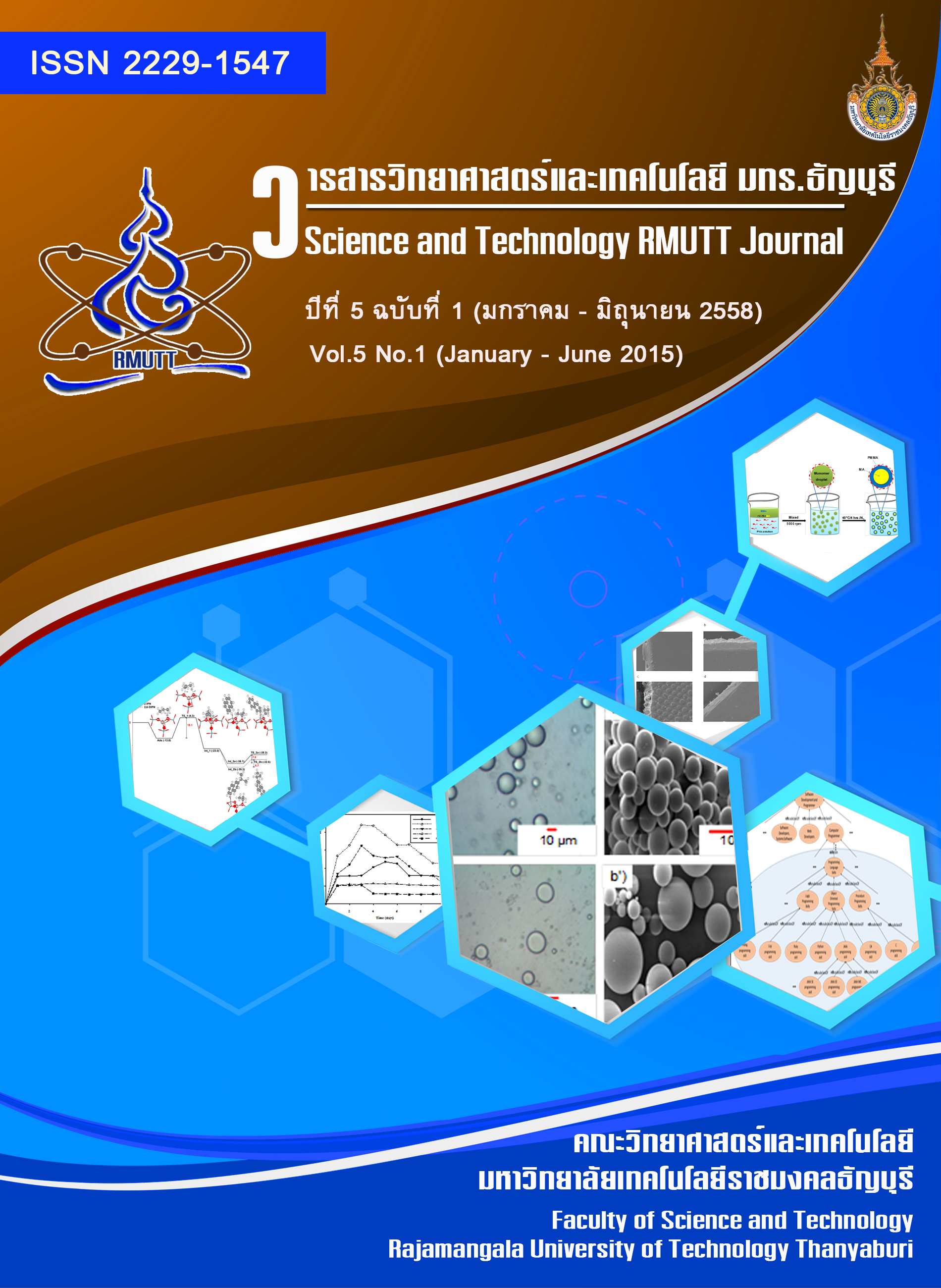Screening of 5'-Phosphodiesterase Producing Bacteria from Raw Fish Sauce
Main Article Content
Abstract
Twenty pure bacterial cultures isolated from raw fish sauce were selected for 5´- phosphodiesterase (5´- PDE) producing ability on agar medium and liquid medium containing 0-3.0 M NaCl. The results showed that isolate AB 005 could produce the highest 5´- PDE activity. The selected isolate was further identified on the basis of morphological, biochemical and compared 16S rDNA gene to other bacteria. It was concluded that isolate AB 005 belonged to Bacillus pumilus and classified as halotolerant bacteria. A halotolerant Bacillus pumilus AB 005 could produce the highest 5´- PDE activity at pH of 7.0 and 37 oC in liquid medium without NaCl. Growth and production of 5´- PDE from Bacillus pumilus AB 005 in 5.0 L fermenter using liquid medium was investigated. A typical pattern of 5´- PDE production showed that enzyme production was coupled to cell multiplication and the maximum 5´- PDE production of 10.50 unit/ml was observed at 36 hr.
Article Details
References
A. Kuninaka, “Nucleotides and related compounds,” in Biotechnology Product of Primary Metabolism. vol. 6, H.J. Rehm and G. Reed (eds.), M. Roehr (vol. eds.), Weinheim:VCH Verlagsgesellschaft, 1996, pp. 563-606
แก้ว กังสดาลอำไพ, “ผงชูรสอีกครั้ง,” นิตยสารหมอชาวบ้าน, 32(378), 44-47, 2531
A. Kuninaka, M. Kibi, H. Yoshino, and K. Sahaguchi, “Studies on 5' phosphodiesterases in microorganisms. Past 2. Properties and application of Penicllium citrinum 5'-phosphodiesterases,” Agric. Biol. Chem., vol. 25, pp. 693-701, 1961.
H. Onishi, M. Kamekura, H. Yokoi, and T. Kobayashi, “Production of 5'-nucleotide by using halophilic nuclease H preferentially absorbed on flocculated cell of the halophile Micrococcus varians subs. halophilus,” Appl. Environ. Microbiol., vol. 54, No. 11, pp. 2632-2635, 1988.
A.J. Deoda, and R.S. Singhal, “5'-Phosphodiesterases (5'-PDE) from germinated barley for hydrolysis of RNA to produce flavor nucleotides,” Bioresour. Technol., vol. 88, pp. 245-250, 2003.
S.N. Sehgal, and N.E. Gibbons, “Effect of some metal ions on the growth of Halobacterium cutirubrum,” Can. J. Microbiol, vol. 6, pp. 165-169, 1960.
K. Ikeda, “Characterization of extracellular halophilic ribonuclease from halotolerant Pseudomonas sp.,” M.S. Thesis, Kasetsart University, 2000.
M. Fujimoto, A. Kuninaka, and H. Yoshino, “Purification of a nuclease from Penicillium citrinum,” Agric. Biol. Chem., vol. 38, pp. 83-777, 1974.
D.J. Kushner, “Life in high salt and solute concentrations : Halophilic bacteria,” in Microbial Life in Extreme Environments. D.J. Kushner, ed., London : Academic Press, 1978, pp. 317-368.
M.J. Garabito, M.C. Maquez, and A. Ventosa, “Halotolerant Bacillus diversity in hypersaline Environments,” Can. J. Microbiol., vol. 44, pp 95-102, 1998.
D. Lee, Y. Kok, K. Kim, B. Kim, H. Choi, D. Kim, M.T. Suhartono, and Y. Pyun, “Isolation and characterization of a thermophilic lipase from Bacillus thermoleovorans ID-1,” FEMS Microbiol. Lett. vol. 179, pp. 393-400, 1999.


